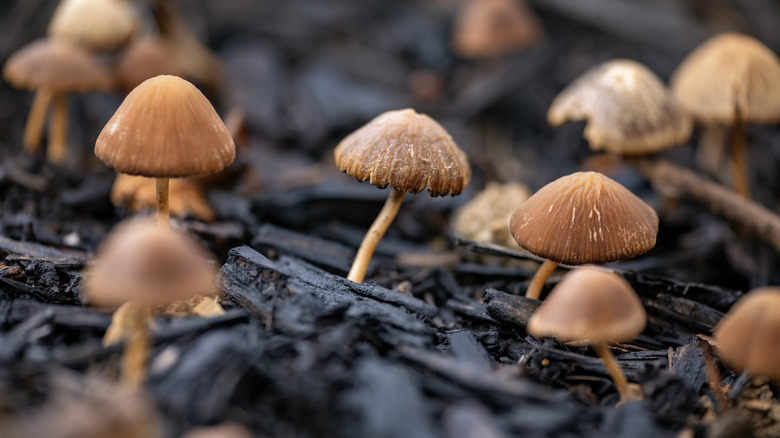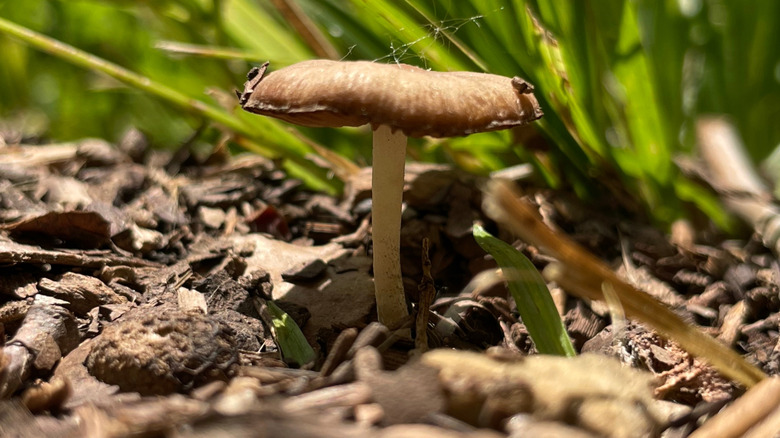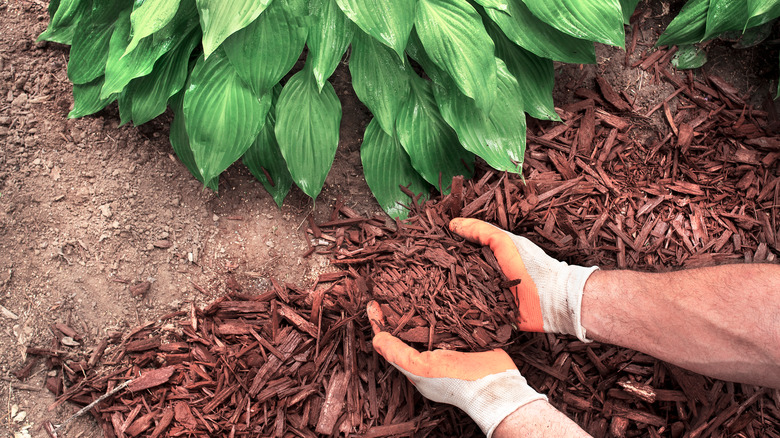What Mushrooms Growing In Mulch Are Telling You About The Health Of Your Plants
With all the ways to use mulch in your yard and garden, it isn't uncommon to run into some issues here and there, including the growth of mushrooms. Understandably, you may think these unwelcome fungi are a sign of disease or decay in your outdoor space. But is that really what mushrooms growing in your mulch are telling you about the health of your plants?
The good news is, the mushrooms themselves are not a threat to your plants. They are just doing their job to break down organic components in the soil. The bad news is, your plants could be at risk of root and rodent damage due to too much mulch in your soil. On the surface, you may think, "the more mulch, the better, right?" Wrong. Mushrooms growing on your mulch are telling you there is too much mulch, which creates the perfect environment for mushroom growth. It can also lead to root damage and other problems for your plants.
Why mushrooms grow when you use too much mulch
When too much mulch is used near plants, it can cause a range of serious problems that negatively impact the health of your plants. Mulch is beneficial in moisture control for soil and weed suppression, which you would think would be great for your plants. However, when there is too much mulch present, the moisture is retained in the mulch and not transferred to the plant roots. This causes the root systems to die because they do not have access to enough oxygen. It also creates a wet, decomposing bed of organic material close to the surface: the perfect environment for mushrooms and slime mold. Mulch is also an ideal cover for rodents, which sometimes munch on plants.
Mushrooms need a few key environmental conditions to sprout. First, they love moisture and organic material, particularly wood. Mulch offers this environment so perfectly that it is commonly used as a medium for growing mushrooms. In addition, most mushrooms like a slightly acidic soil or substrate. This is yet another condition that mulch can impact due to the pH in the mulch itself, which can also cause harm to your plants depending on their soil needs. If you notice mushrooms in mulch near trees, you should address the issue immediately. In this case, the fungi could be feeding on dying tree roots that have been suffocated by the mulch.
How to know how much mulch you need
When used properly, mulch can be a useful tool for controlling weed growth in your garden. However, it is important to choose the best type of mulch for your garden and apply a healthy layer without overdoing it. Over-mulching is just one of many spring mulching mistakes that will cause issues with your plants. But it is the most likely culprit of mulch mushrooms.
So, how much mulch should you actually be using? The answer depends on where you are using the mulch and what type you choose. Most commonly, mulch is used near plants in gardens, around trees and shrubs, and in lawns near walkways or accent areas. First, if you are using it around trees, shrubs, or garden plants, leave 6 to 12 inches of space between the base or trunk of the plant and the mulch. This helps give the plant room to breathe while still gaining the benefits of mulching. If you are using mulch that is cut to less than half an inch, use a thin layer of 2 inches or less. For coarse mulch, you can use up to 6 inches. However, if your soil is not well-draining, reduce the layer depth.


